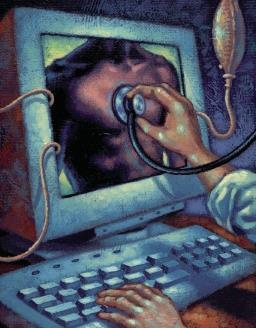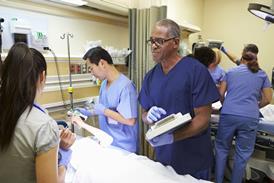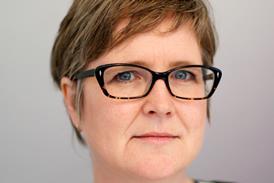Non-face-to-face service models are safe and effective and not just a cost-cutting replacement for traditional models, writes Dr Steve Shaw and Sebastien Baugh

There is a growing problem with outpatient care in acute hospitals.
 Dr Steve Shaw
Dr Steve Shaw
In England, outpatient hospital visits have nearly doubled over the last decade. One in five appointments are either cancelled, or patients do not attend.
The model can be inconvenient and inflexible for patients, who may need to arrange time off work, childcare, and travel.There is also an environmental impact; 5 per cent of all road traffic in England is caused by the NHS alone.
In response, the NHS long-term plan aims to reduce outpatient visits by a third over the next five years, removing the need for up to 30 million appointments a year – no mean feat.
This will free up time for health professionals and clerical staff in a staff-short system, free up hospital outpatient rooms currently required to run clinics and reduce CO2 emissions through reducing the number of patients travelling to hospital.
In London, for example, this has the potential to avoid up to 50,000,000 miles of journeys, aligning with the London Vision to reduce motor traffic volumes and improve the environment we live in.
The Royal College of Physicians have considered how improvements could be made, concluding that there is a place for managing referrals more effectively, better planning for more efficient initial investigations and management, and examining alternative models for monitoring and managing patients.
New models of non-face-to-face (virtual) clinics can be part of the solution across all these stages. We know that nationally, only 3 per cent of outpatient appointments are delivered through non-face-to-face models currently.
 Sebastien Baugh
Sebastien Baugh
Recognising the lack of practical advice on how to set up non-face-to-face clinics, UCLPartners has worked with NHS clinicians, managers and patients to develop an online how-to guide to help embed this approach.
A set of common challenges and opportunities emerged in implementing these models of care.
The challenges
One of the key challenges has been high expectation around the financial savings that non-face-to-face clinics would deliver.
Often, this hasn’t yet been realised: simply changing from a face-to-face to a non face-to-face model doesn’t necessarily produce savings or other immediate benefits such as reduction in outpatient wait times.
It requires system-wide change to ensure that non-face-to-face clinics are part of the solution for outpatient transformation, to support achievement of the NHS long-term plan objectives, with system leadership and collaboration essential enablers.
Furthermore, although there are some good examples of evidence for non-face-to-face models, we are mostly dealing with an emerging evidence base. In practical terms, this requires an approach that weighs up the available literature and introduces innovation at a local level, all whilst contributing to the evidence base.
A challenging task, especially when having to convince commissioners that capital investment may be required upfront, and that both financial savings and clinical outcomes can be delayed. A quality improvement approach has worked well in some cases, learning through small-scale testing before implementing more widely.
Opportunities
While some challenges have emerged, developing non-face-to-face models also presents some clear opportunities in how we engage with patients and work together as a healthcare system.
Broadly speaking, patients are very positive about these new models of care. The models offer clear benefits, such as reducing the need to take time off work, minimising their transport and parking costs, reducing the need to re-arrange caring commitments and better access into services.
It is important to keep patients informed, but also reassure and demonstrate that non-face-to-face models are safe and effective, and that they are not just a cost-cutting replacement for traditional models. It’s also important to consider the impact on patients, ensuring that outpatient services meet the needs of modern-day living and patient expectations.
Through using primary care data, renal teams in East London have demonstrated reductions in waiting times to see a specialist and the number of patients requiring face-to-face appointments in secondary care.
There are opportunities to work together as a system to have an impact at a population level with other specialties that lend themselves to the approach of reviewing quantifiable population level data and identifying high-risk patients. There are further opportunities to manage patients with multiple co-morbidities more effectively through these models.
This should result in managing patients with long-term conditions more holistically and slowing disease progression, along with improving patient experiences. Primary care is a key enabler to this, and any change in how patients will be managed that will affect primary care must be done in partnership with these clinicians.
As technology evolves and patient expectations change, it is becoming evident that the current model is outdated and unsustainable. Non-face-to-face clinics will be one part of the outpatient services of the future.
There are always challenges and uncertainties in setting out on a new approach, but the potential benefits for patients and teams are significant.
We now need to ensure that teams receive the necessary support and guidance to enable them to implement and deliver these new models of care for the benefit of patients and the system.



























No comments yet